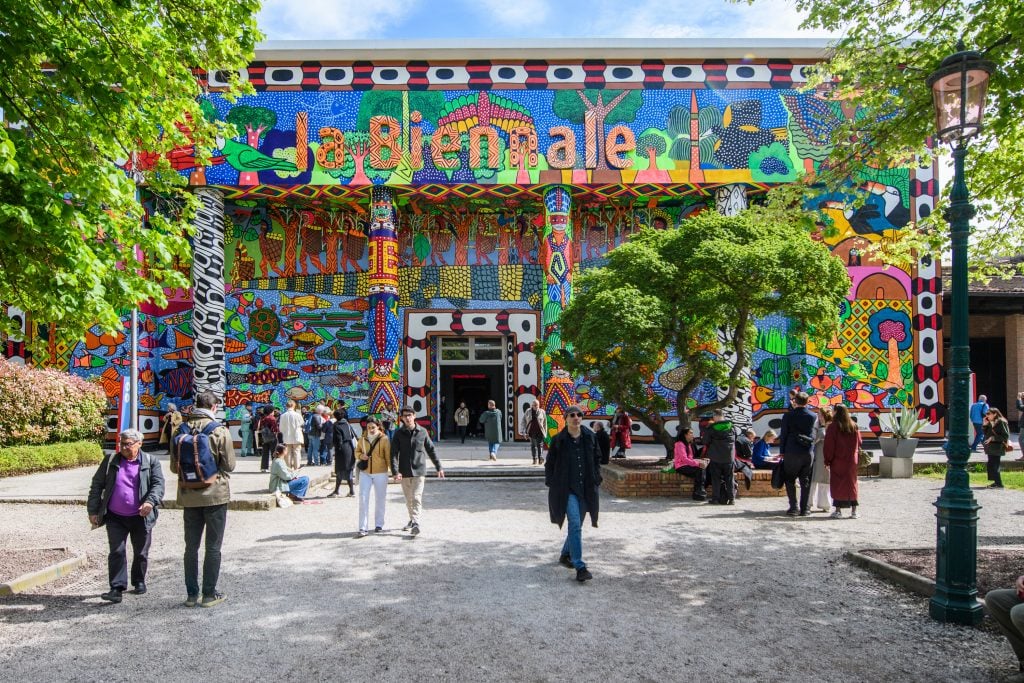Art World
The Venice Biennale Saw Fewer Attendees, But a More Diverse Crowd
The numbers for the 60th Biennale have been released.

The numbers for the 60th Biennale have been released.

Verity Babbs

The Venice Biennale has released their in-figures report for this year’s exhibition, with an overall decrease in visitors but an uptick in visitors from underrepresented groups.
The total comes to 699,304 visitors in attendance, with an average of 3,321 enjoying the mega-exhibition each day during the seven-month run, which closed on November 24. These figures are down from the record-setting previous edition in 2022, when over 800,000 tickets were sold and 4,062 visitors attended “The Milk of Dreams”—curated by Italian curator Cecilia Alemani—on average per day.
The total remains the second highest in memory, topping the close to 600,000 visitors recorded for the Ralph Rugoff-curated 2019 Venice Biennale.
Of the nearly 700,000 tickets sold this year, 30 percent were used by young people (under the age of 26) and students (35 percent of whom travelled from abroad to attend the Biennale). The Biennale also reported a 150 percent increase in visitors taking part in educational activities and guided tours.

An installation by artist Alioune Diagne during the pre-opening of the Venice Biennale, on April 16, 2024 in Venice. Photo: Gabriel Bouys/AFP via Getty Images
A clear and dramatic gain was the 67 percent increase in visitors relating to the exhibition’s Fragile Categories Project, comprising those with “mental health disabilities, homeless people, individuals with addictions, migrants, minors and in general individuals who find themselves in situations of social distress.” This included some 2,689 participants who took part through an initiative known as the Accessible Biennale, founded in 2015, which focuses on “persons with disabilities or situations of social disadvantage or marginalization.”

Adriano Pedrosa, curator of the 2024 Venice Biennale, poses for a portrait on the terrace of Ca’ Giustinian, Venice, Italy. Photo: Stefano Mazzola/Getty Images.
In order to make the exhibition more accessible, the Biennale’s programming included a sensory map “indicating the environments in which sensory stimuli are present and services are provided,” a social guide “written in easy-to-read language” which was “aimed at people with cognitive disabilities,” and special routes through the Biennale designed for members of the “visually impaired or blind public.”
This year’s exhibition, titled “Stranieri Ovunque—Foreigners Everywhere,” was curated by Brazilian curator and artistic director of the São Paulo Museum of Art, Adriano Pedrosa. Pedrosa referenced the emphasis on inclusivity at this year’s Biennale in a press statement following the closing of the exhibition, saying that he looked forward to an “afterlife” for the “visibility of artists from the Global South, as well as indigenous artists, queer artists, self taught artists and 20th century figures from Africa, Asia, and Latin America.”
Pietrangelo Buttafuoco, a controversial Italian journalist and the Biennale’s president this year, said: “In these challenging times for the world, art reminds us that everything is polemos [sic] between cultures, viewpoints, past and future. But it also teaches us that life’s path leads us to encounter the you, the us, beyond the desperate solitude of the I. We are all Foreigners Everywhere in the crossing of worlds, in the experience of existence, and hence in the evolution of beauty and our very freedom, there where we are united by our common appreciation of art.”
So far no details have been announced about the curatorial team or plans for the 61st edition of the Biennale, which was inaugurated in 1895.